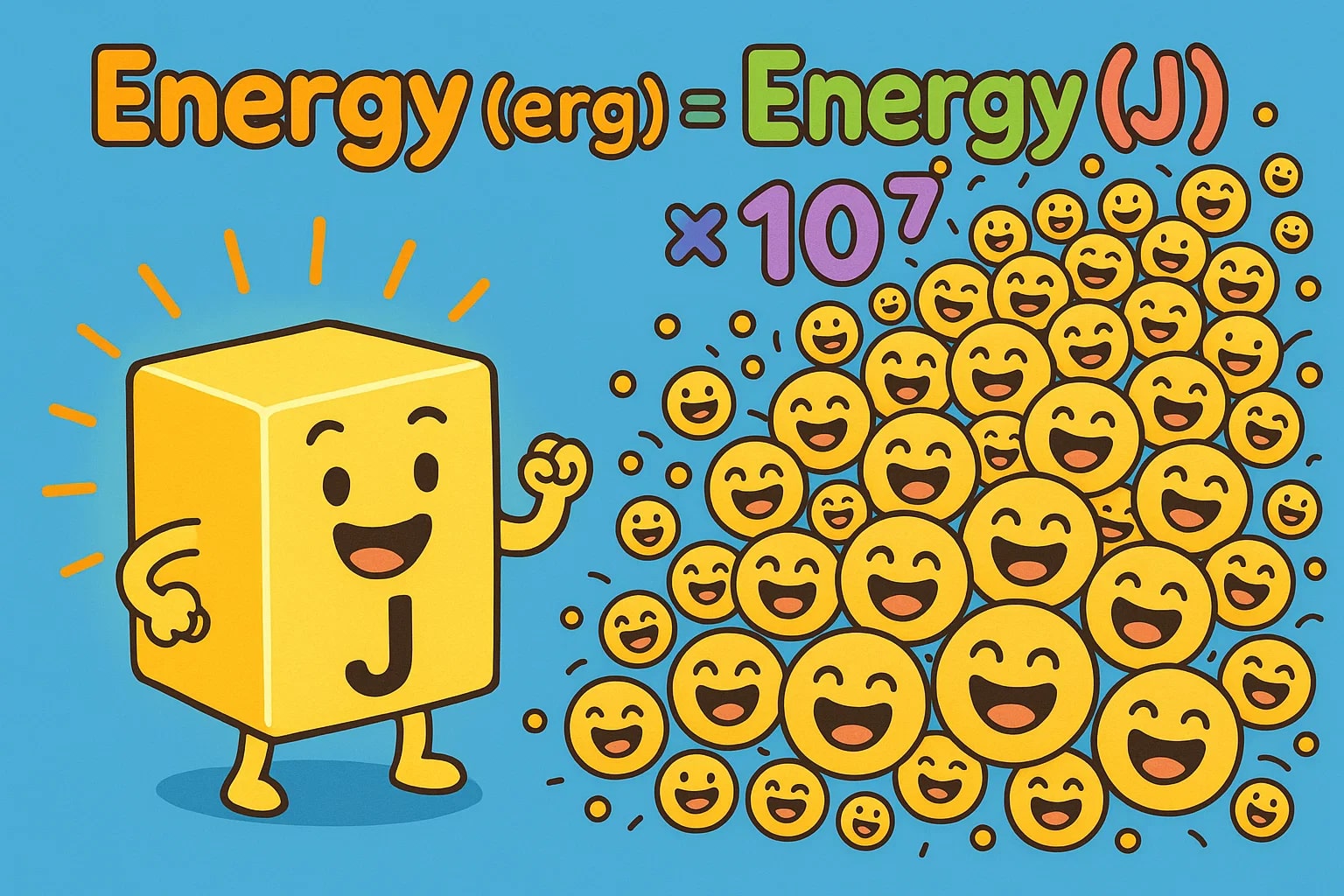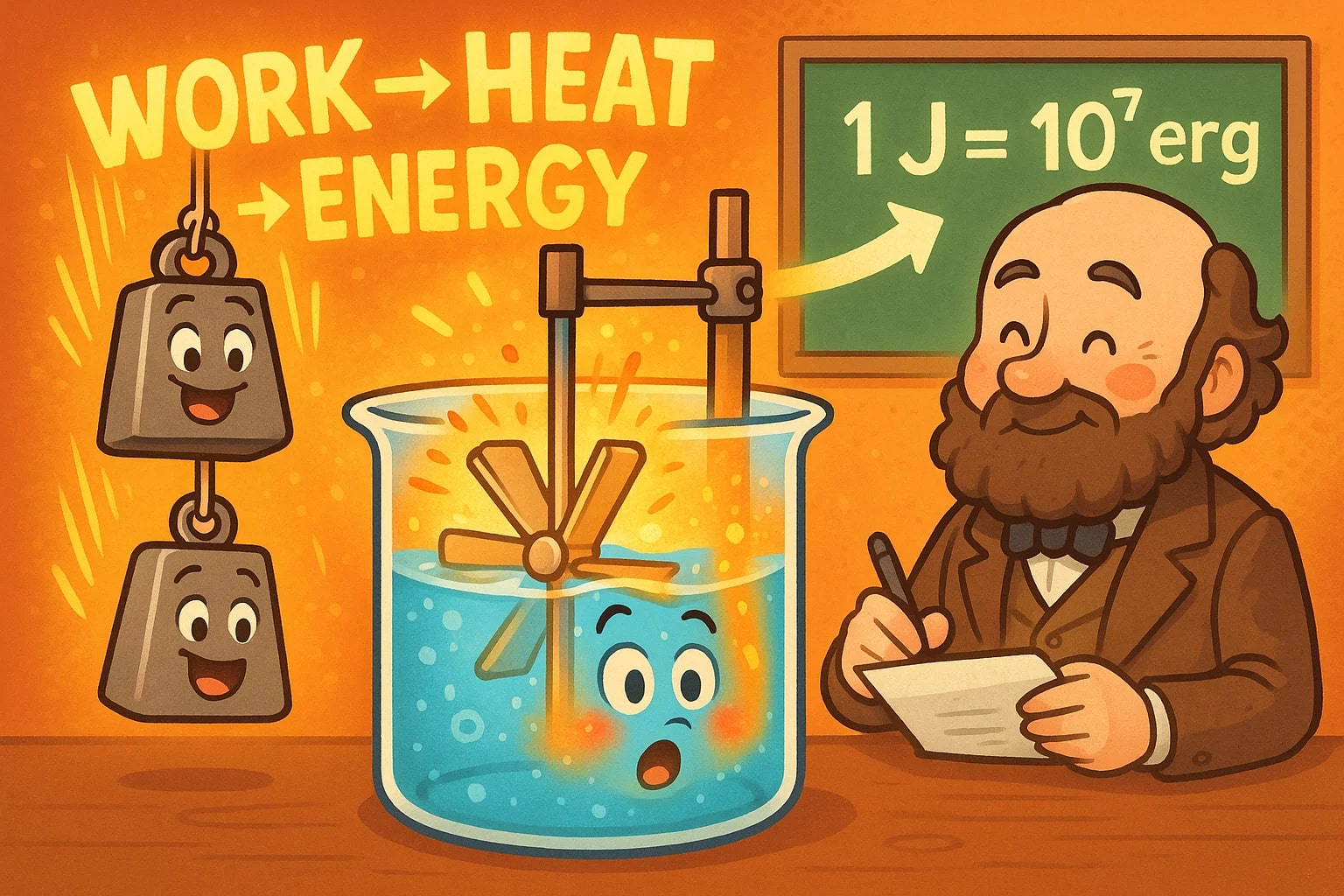erg to joule – How to convert erg to J
The conversion from erg to joule is more than just switching between units — it’s a journey from the centimeter–gram–second (CGS) system to the meter–kilogram–second (SI) system.

What is an erg?
An erg is the CGS unit of energy, defined as the work done by a force of one dyne over a distance of one centimeter.
Formula:
1 erg = 1 dyne × 1 cm
In SI terms:
1 erg = 1 × 10⁻⁷ J
Ergs are often used in astrophysics and microscopic physics, where extremely small energy values are common.
What is a joule?
A joule is the SI unit of energy, defined as the work done when a force of one newton moves an object one meter.
Formula:
1 J = 1 N × 1 m or E = ½mv²
In CGS terms:
1 J = 10⁷ erg
Joules are used worldwide for most engineering, physics, and energy-related applications.
How to convert erg to J
The conversion is straightforward because the ratio is fixed:
Energy (J) = Energy (erg) × 10⁻⁷
Example:
If you have 5 × 10⁶ erg, then
Energy = 5 × 10⁶ × 10⁻⁷ = 0.5 J
For reverse conversion:
Energy (erg) = Energy (J) × 10⁷
For quick, precise calculations, try our Energy Converter or explore more unit options with the full Conversion Tools collection.
Do you know?
-
Erg fact: In astrophysics, ergs are used to describe the energy output of events like solar flares. A large flare can release up to 10³² erg of energy — a scale where joules would result in cumbersome numbers.
-
Joule fact: The joule is named after James Prescott Joule, who proved that heat and mechanical work are equivalent forms of energy, fundamentally linking thermal and mechanical sciences.
-
Erg fact: The erg was officially part of the CGS system in the late 19th century, becoming a standard in fields such as spectroscopy and microscopic thermodynamics.
-
Joule fact: One joule equals the energy needed to lift a small apple about one meter against Earth’s gravity.
The Paddle-Wheel Experiment That Changed Energy Science
In the 1840s, James Prescott Joule set out to prove that heat was not a mysterious fluid (as many believed at the time) but a measurable form of energy. His most famous setup involved a paddle wheel immersed in water, connected to falling weights via a cord and pulley.
As the weights fell, they turned the paddle, stirring the water. The stirring increased the water’s temperature — a result of mechanical work being converted into heat. Joule carefully measured the weight’s drop distance, the water’s mass, and the temperature rise, performing the experiment repeatedly to ensure accuracy.
Through this work, he determined the mechanical equivalent of heat: the exact amount of mechanical energy required to produce a unit of heat. His findings led to the modern definition of the joule and reinforced the principle of energy conservation.
This connection also indirectly tied the joule to the erg. Later, when scientists working in the CGS system needed a smaller unit for precision, the erg was defined so that 1 J = 10⁷ erg, preserving Joule’s original mechanical-to-heat relationship across both unit systems.
The paddle-wheel experiment stands as a pivotal moment in physics — not just for naming the joule, but for uniting mechanical work, heat, and energy measurement in a single framework. Without it, conversions like erg to joule might never have been standardized.

From Lab Bench to Everyday Life
Converting erg to joule may look like simple multiplication, but behind it lies a story of scientific discovery that reshaped how we measure and think about energy. Whether you’re calculating cosmic energy in ergs or everyday power in joules, knowing their shared origin adds depth to the numbers on your screen. And if you need to switch between them instantly, Jetcalculator’s tools are ready to make the process effortless.

